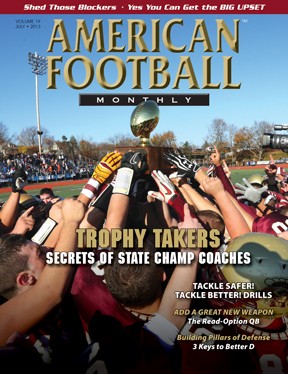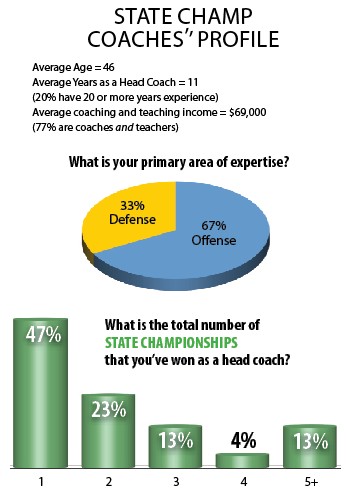AMERICAN FOOTBALL MONTHLY THE #1 RESOURCE FOR FOOTBALL COACHES
Article CategoriesAFM Magazine
|
On Top of the World – AFM’s Annual State Champions Survey and Profilesby: AFM Editorial Staff© More from this issue State champion coaches share their secrets to winning it all. The results may surprise you. Most high school coaches would agree that their ultimate goal is winning their state championship. Taking home the trophy after the punishing regular season and pressure-filled playoffs is the pinnacle for the 300+ teams that annually achieve that goal. But do coaches agree on the best methods to use to reach that mountaintop? What offensive, defensive and special teams strategies give you the best shot at raising your own state title trophy? Is there a single factor that is more important than others when it comes to winning?
| 
|
Subscribe now to start receiving our monthly magazine PLUS get INSTANT unlimited access to over 4000 pages of 100 percent football coaching information, ONLY available at AmericanFootballMonthly.com! | |||
NEED PASSWORD HELP |





